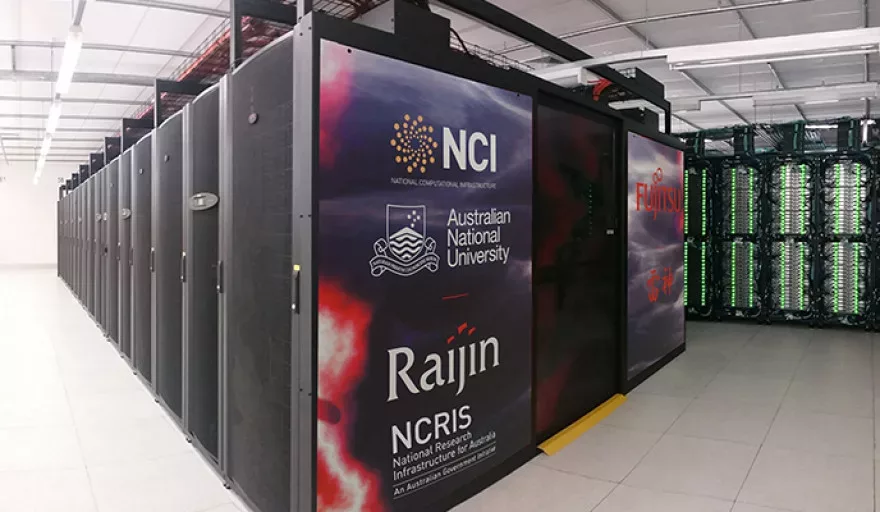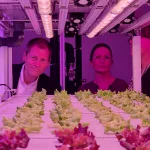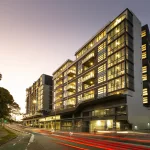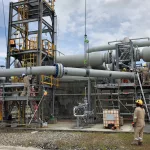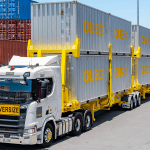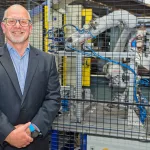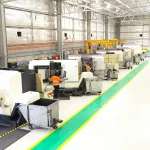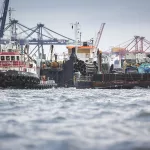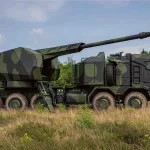Outlook Publishing catches up with Mike Foster, CEO of Fujitsu Australia & New Zealand, to find out more about the supercomputer project and what it means for the organisation.
Exactly when the first computer was invented is still a matter of debate today.
Some point to the ENIAC machine created by J. Presper Eckert and John Mauchly at the University of Pennsylvania in 1943, a project which took three years and produced a goliath covering 1,800 square feet and weighing almost 50 tonnes.
It is generally accepted that the word super was first applied to computers in 1964, when Seymour Cray designed the Control Data Corporation (CDC) 6600. It was extraordinary for its time, its top speed of 40 MHz leaving the previous fastest computer at the time (the IBM 7030 Stretch) trailing in its wake.
However, by today’s standards it is painfully slow.
An ever competitive and evolving race, the fastest supercomputer as of November 2018 is the US Department of Energy’s machine named Summit, with a power efficiency of 14.668 GFlops/watt.
In Australia, the Fujitsu-commissioned Raijin holds the title of fastest supercomputer in the country. Located in Canberra, the company is now fully invested in producing its leaner and faster successor, Gadi.
We caught up with Mike Foster, CEO of Fujitsu Australia & New Zealand, to find out more about the project and what it means for the organisation.
Q&A WITH MIKE FOSTER, CEO, FUJITSU AUSTRALIA & NEW ZEALAND
A bit about yourself to start with. What inspired your passion in technology?
Mike Foster (MF): I was appointed the CEO of Fujitsu Australia and New Zealand in 2011, and am proud to have maintained a strategy of providing innovation and market leadership across our key areas of business. I am proud to lead a customer-focussed organisation across the Oceania region, and to have made significant investment over the last eight years to encourage strategic investment and growth in the region. Prior to joining Fujitsu, my career has spanned over 25 years within the ICT industry both in Australia and North America.
My IT career started as a trainee in the IT industry and it was here that my passion for IT spawned. This passion continued as I progressed into senior business management and executive management roles. While I am always interested in new developments in technology, to me it is more important to consider how technology impacts people. This is well aligned with Fujitsu’s vision of Human Centric Innovation, in which any technology solution is designed for the benefit of humans first.
How exciting a project is the new Australian supercomputer for Fujitsu?
MF: Australian research has played a part in a number of world firsts, including the bionic ear, lithium medical treatment, ultrasounds, the black box flight recorder and penicillin-based antibiotics. With the award of the contract to supply the replacement for Australia’s fastest supercomputer, Fujitsu is playing a part in keeping Australia at the forefront of the world’s research community as it helps to solve complex and pressing global challenges. We are proud to be able to help assist Australian researchers and provide them with the tools to unlock the challenges of society, the mysteries of the universe, and advancements in medical research.
Winning the opportunity to lead this important project is particularly satisfying for Fujitsu as it helps us to continue our long-standing involvement with the National Computational Infrastructure (NCI), based at The Australian National University (ANU). Fujitsu commissioned the current ‘Raijin’ supercomputer in 2013 and we also supplied one of the University’s earliest supercomputers in the 1980s.
Why has it been named Gadi?
MF: The new supercomputer has been named by NCI as Gadi, meaning ‘to search for’ in the language of the traditional owners of the Canberra region, the Ngunnawal people. For Fujitsu, the use of an Aboriginal name is particularly significant as we have recently restated our support for indigenous communities through Fujitsu’s Reconciliation Action Plan (RAP), which was launched in 2018.
Tell us about some of Gadi’s main features. What enhancements have been made on its predecessor from 2012?
MF: To ensure the best outcome for NCI, Fujitsu has assembled a solution based on its own technology in conjunction with technology sourced from a number of vendors including Lenovo, Intel, NVIDIA, NetApp, Mellanox Technologies, DDN (Lustre), Altair and APC by Schneider Electric. This robust and industry leading technology approach is intended to sustain the needs of Australian research for years to come. The new supercomputer will utilise innovative direct liquid cooling technologies with warm water, allowing for high-density computing.
With 3,200 nodes, Gadi will power some of Australia’s most crucial research, seeking to solve some of the most complex and pressing challenges facing the world currently. Researchers from organisations including the CSIRO, Geosciences Australia, and the Bureau of Meteorology will benefit from faster speeds and higher capacity compared to the existing supercomputer.
Can you tell us about Gadi in laymen’s terms – what does 3,200 nodes and the other hardware convert to in terms of power?
MF: When commissioned, we anticipate that the new supercomputer will be up to 10 times more powerful than Raijin when it was commissioned, which is currently rated as Australia’s fastest supercomputer.
For a real-world example, if you provided every person in earth (7.53 billion) with the same desk calculator, then they would take about a month (31 days) to collectively perform the same number of calculations that Gadi will perform in one second.
What benefits will this bring to researchers at Canberra (and the country more widely)?
MF:Gadiwill help to power some of the nation’s most critical research, and will be utilised by over five thousand researchers from organisations including CSIRO, Geoscience Australia and the Bureau of Meteorology as well as universities and medical research organisations. Not only will it help researchers to access information at faster speeds and higher capacity, but it will help them to use their data more effectively.
How has Fujitsu collaborated with other companies on the project, and how important is such collaboration generally in terms of dealing with national/global challenges?
MF: Fujitsu is proud to have collaborated closely with NCI and ANU both in 2012 for the development of Raijin and now again in 2019 for the launch of Gadi in November. NCI is the nation’s most highly integrated, high performance research computing environment based at ANU. It plays a pivotal role in the national research landscape, and the delivery of the supercomputer by Fujitsu will continue to be at the centre of this critical work for Australia.
In designing the new supercomputer, Fujitsu has utilised the best available technology from a number of vendors to ensure the best long-term value for NCI.
Are you already looking ahead to the next generation of supercomputer? How powerful do you think they can become?
MF: Having spent the last 30 years in the ICT industry I know that things never stay the same, and that there will always be new technology that supersedes the best we have at any given time. We will continue to work closely with NCI to help ensure that Gadi plays a vital role in supporting Australian research, and we will continue to provide NCI with the benefit our extensive research and knowledge in the area of high-performance computing.

